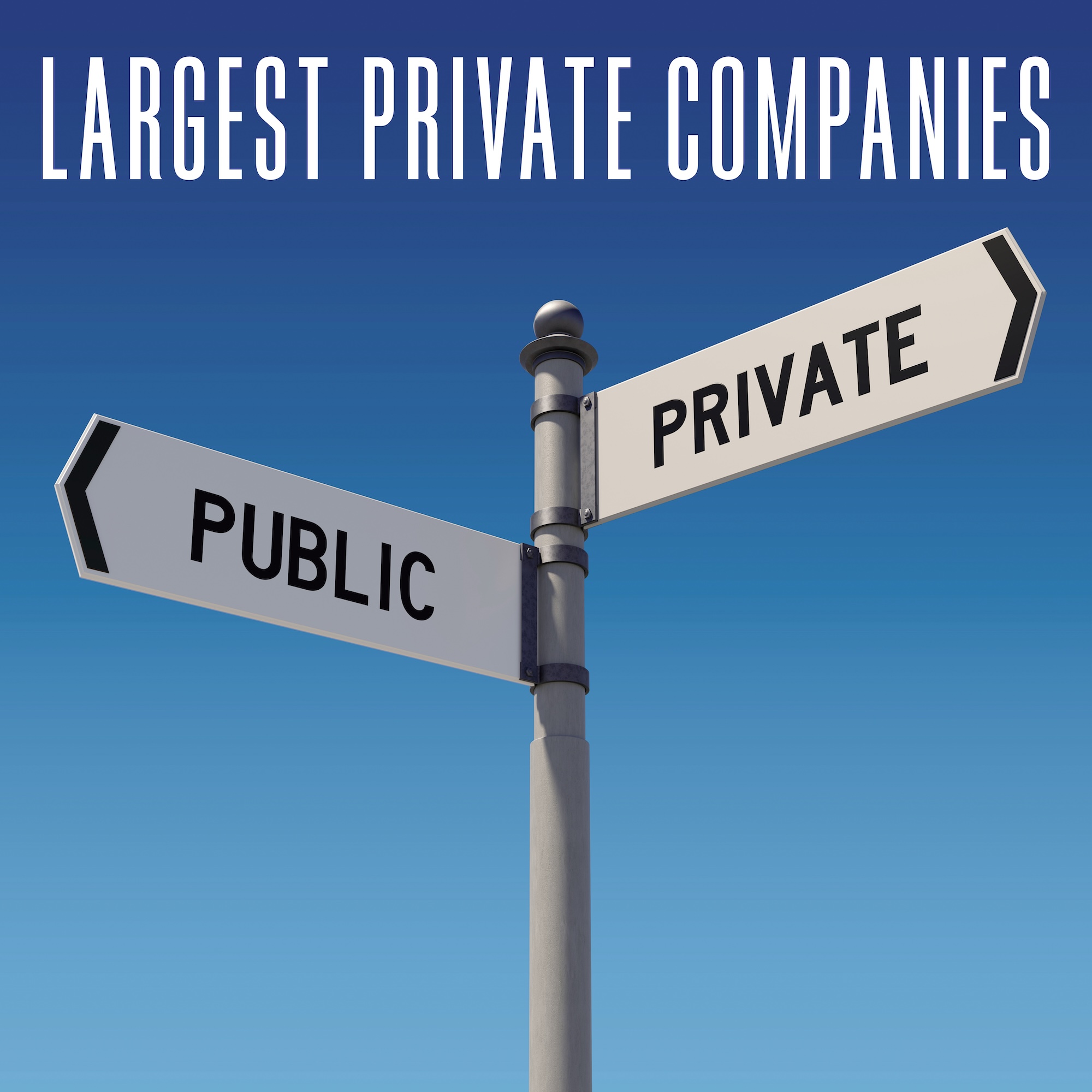Going Public Loses Luster – Los Angeles Business Journal

As investors and entrepreneurs alike navigate the changing dynamics of the business landscape, strategies for success and profits have changed. One dominant trend in recent decades is the declining number of publicly listed companies. It’s not that there are fewer companies operating, but rather that more and more companies are choosing to stay private by avoiding or delaying public stock offerings.
While an initial public offering was once considered a crowning point of success, analysts say that operating as a public company doesn’t have the allure it once did.
Putting stock on the public market gives a company new sources of capital, but it comes with complicated conditions, such as the Securities and Exchange Commission’s slate of public reporting and disclosure requirements. The decreased privacy concerning finances and control over business decisions may not be worth it for everyone. The number of public companies in the United States exceeded 8,000 in 1996, but by this year that count dropped to 3,700 – a plunge of more than 50%, CNN Business reported in June.
Private companies in Los Angeles have certainly gotten much larger. Over the 25-year period ending last year, revenues for the 10 Largest Private Companies on the Business Journal’s list have increased a total of more than 400%, compared to only an 84% increase in the cost of living over that span.
Going public comes with increased scrutiny of operations from the SEC and shareholders alike, and Lloyd Greif, president and chief executive of downtown-based Greif & Co., said that the “bloom has fallen off the rose” for IPOs. Greif stressed that private equity firms are rising in power and ubiquity and, although the surest option to procuring liquidity in the past was to go public, private equity has become increasingly accessible and well funded.
“Public offerings aren’t considered to be attractive as a form of investment. There’s too much volatility,” Greif said. “The markets react too much to any kind of geopolitical event or economic news. Whereas a privately held company can put their head down and focus on business and not focus on what their stock’s doing every minute … Being a public company just ain’t what it used to be.”
The most popular methods for taking a company public include an IPO and a direct listing. Direct listings, unlike IPOs, don’t involve the creation of new shares and allow existing shareholders to start selling stock without an underwriter or intermediary. IPOs can be more expensive, but are a more common option.
PE route
But staying private isn’t free, especially if the company sells to private equity partners. They typically take a 2% management fee and a carried interest fee of around 20% from company profits.
Olav Sorenson, professor of strategy and sociology at the UCLA Anderson School of Management, said the private equity route can be complicated. While there are more private equity firms than ever before, he said private investment is more expensive than getting funding through a public listing, and those investors typically expect a higher rate of return for themselves than public market investors would.
“I think the pros of going public are twofold,” Sorenson said. “One is the liquidity for the current owners, the second is lower cost of capital … because it’s a little bit easier for public companies to issue corporate debt at lower interest rates. The disadvantage, of course, is the reporting requirements to the SEC and the short-termism of the market. There’s much more pressure on a quarter-to-quarter basis to be showing some kind of progress than you would get with private investors.”
The substantial infrastructure needed to manage the financial and compliance regulation aspects of being a public company can be expensive, according to Rainy Austin, president of Beverly Hills-based real estate brokerage firm The Agency. Austin said that while The Agency may reevaluate a public offering if it gets to a stage where it needs outside capital to continue propeling and scaling its growth, it is advantageous to not be “beholden” to the public market.

“A big decision for us in staying private all of these years has been around maintaining control and direction of the way the company is going strategically, but also the flexibility in our growth strategies,” Austin said. “In order to be nimble, and also to be growing at the rate and expansion that we are, it’s just easier to be able to make decisions and not have to wait to justify them to someone else.”
Private trend
Greif said the declining number of publicly traded companies isn’t region-specific, adding that the shift in how business is done in capital markets extends to Los Angeles and Southern California. With its healthy startup environment, Greif said, Southern California is the “entrepreneurial capital of the world,” and that these local entrepreneurs do not lack in equity options.
“Historically, the more connected region in the state was Northern California, because that was the home of Sand Hill Road and Silicon Valley, but there’s a lot more private equity and venture capital firms that have cropped up in the last decade-plus here in Southern California,” Greif said. “The trend of companies staying private longer, or not even going public at all, certainly pertains to businesses here in Los Angeles.”
The city is still home to a wealth of public companies, many of which are thriving financially. When Santa Monica-based Snap Inc. filed for an IPO in 2017, its investors were told that the company “may never achieve or maintain profitability.” Snap has grown to have one of the highest market capitalizations of all public companies in Los Angeles, and recorded adjusted earnings before interest, taxes, depreciation and amortization of $378 million last year.
Some local companies have struggled since going public, including FaZe Holdings Inc., the owner and operator of lifestyle and media platform FaZe Clan. The Hollywood-based company went public in July of last year while still experiencing significant operating losses and is now addressing an ongoing delisting notice from the Nasdaq to either raise its share price or be removed from the market.
Although many are successful, some companies end up backtracking after a public listing and remove their security from the stock exchanges. Hilton Hotels & Resorts, Dell Inc. and X Corp., formerly Twitter Inc., are among such companies. Delisting is done for a variety of reasons, including a desire to reduce public and regulatory oversight, low valuation by the market or underdeveloped infrastructure.
Going public before reaching a certain valuation or size can lead to failure on the market, according to Greif.
Eric Flamholtz, president and founder of Westwood-based Management Systems Consulting Corp., was on the board of Commerce-based 99 Cents Only Stores when it was bought out in 2011. He said that going public with insufficient infrastructure for a company of its size led to its delisting. If a company doesn’t have the infrastructure in place, and the market changes, it may be unable to show profitability to shareholders and be forced to sell out, Flamholtz added.
“If you don’t have the profit, you’ll be forced to make decisions that will damage the future of the business and you may in effect stunt the growth,” he said. “There’s a lot of risk. There is a glamour to going public for a lot of people, but there’s also tremendous risk.”
Face the risks
Evan Green, head of West Coast capital markets for Century City-based Moelis & Co., said that the cash from IPOs can help companies grow, pay down debt and prepare capital for either a merger or acquisition or a future capital raise. Additionally, the stock options created by an IPO can help attract and “incentivize” new employees and generate attention.
“However, making the decision to go public always needs to be considered carefully, because management will face all of the risks inherent to public markets, like potential volatility, real-valuation discovery if existing shareholders sell and limits on leverage,” Green said.
Looking back, the number of IPOs dropped after the “dot-com crash” of the early 2000s. According to Jay Ritter, a finance professor at the University of Florida, there were 66 IPOS in 2002, compared to 476 in 1999. Since then, companies, particularly in the technology sector, have been delaying public offerings. The average age of U.S. technology companies that went public in 2022 was 15 years, compared to nine years in 2002.
To Greif, public offerings are more appropriate for “unicorns” – private companies with billion-dollar valuations – because it’s easier for them to get institutional trading and support.
The proportion of companies that go public without high profits has varied over time, Sorenson said. With the influx of private equity and venture capital, there is less pressure now for companies to become very profitable early in case they need to exist off cash flow.
“It’s now much more common for companies to continue to reinvest to try to maximize growth, rather than profitability, and I think that’s also related to why they’re going public later,” Sorenson said. “They have a much longer high-growth phase before they start to prioritize being profitable with their business.”
To thrive in today’s economy, sources said companies must consider both the benefits of a public listing, such as increased liquidity and access to market investors, along with the drawbacks, including a pressure to demonstrate quarterly growth and heightened scrutiny. Ultimately, each company must carefully evaluate its growth goals, equity needs and risk tolerance to determine the right path forward.




